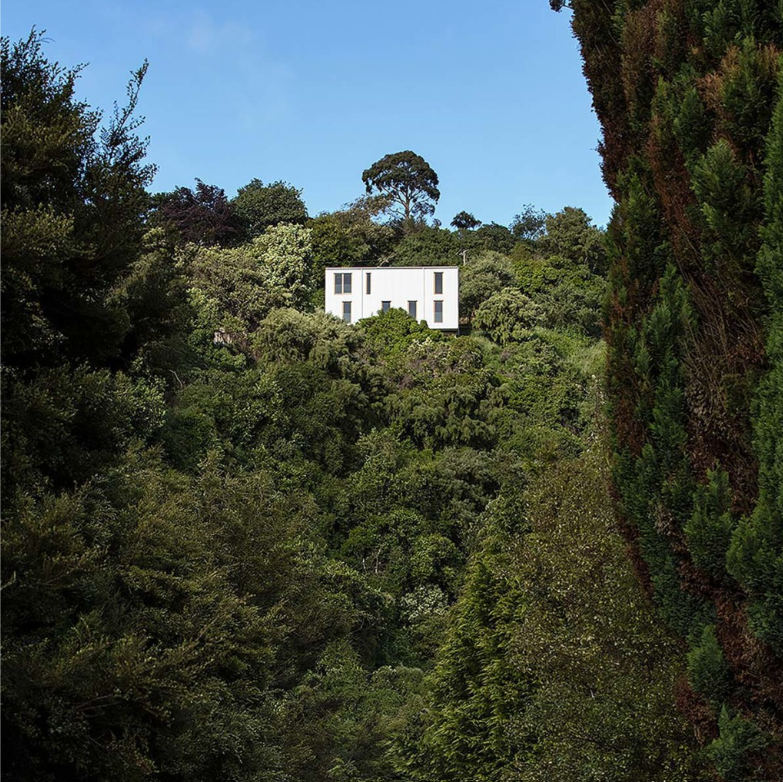Discover
Sustainable abodes: Four inspirational New Zealand eco-home builds
These homes are a testament to honouring the environment through clever architectural design.

From coastal settings to rugged alpine locations, these homes are a testament to honouring the environment through clever architectural design and the latest eco-friendly building practices.
When it comes to considering eco homes – what they are made of, how they are constructed and how they perform – there are many ways to design a building with sustainability in mind. From reusing existing materials such as constructing container homes, reducing waste by employing modular or prefab construction methodologies, or crafting a simple off-grid eco holiday home, the options are vast.
These four remarkable structures each approach the concept in a different way, and not only tread lightly on the land but inspire a deeper connection between inhabitants and their surroundings.
Cover image: Kowhai House by Rafe Maclean Architects. Image: Simon Devitt
1. Honeymoon Bay Bach by JTB Architects
Set within a steep, bush-clad gully in Abel Tasman National Park, sustainable design principles have been used throughout to deliver an energy-efficient, contemporary Aotearoa bach.
The brief called for open-plan living, access to sun and views, and durable, low-maintenance materials that wouldn’t degrade. The resulting plan consists of combined living on the ground floor, plus two bedrooms and a bathroom on the first floor.
Stack ventilation is employed in the double-height living space, with opening skylights used to regulate the temperature and let in fresh air. Extensive glazing on the northeast elevation provides passive heating.
2. Kōwhai House by Rafe Maclean Architects
Designed to Passive House standards, this compact home was conceived around a steep Dunedin bush section that drops away 50 metres from the road. The complexities of the building platform called for a creative response, and the form, though humble in size, encompasses spaces to work, play and gather within a 116 sqm floor plan.
Zincalume cladding emphasises the verticality of the design, which features a roofline that lifts at an unexpectedly dynamic angle above the entry platform and main bedrooms.
Kowhai House by Rafe Maclean Architects. Image: Simon Devitt
3. Team Green Passive House by Team Green Architects
Perched amidst the rolling hills just beyond Arrowtown, this site overlooks a patchwork of farm sheds crafted by the client’s grandfather, and larch trees lovingly planted by his great-grandmother. As such, designing a home on the land was a return to roots, as well as an opportunity to create something special for a family of three that honours the site’s heritage.
Aiming to minimise lifecycle carbon and achieve certifications in Certified Passive House Plus and Homestar 8, the brief demanded innovation within budget constraints, and elegantly marries necessity with efficiency, offering two bedrooms, one bathroom, a laundry, and multifunctional living, kitchen, and dining spaces.
4. Great Barrier House by Studio2 Architects
For homes built on Great Barrier Island, eco-friendliness is a design necessity rather than a wish list item. This home is no exception and features a timber exoskeleton with extensive low-E glazing to allow the home to absorb the sun’s rays. Passive ventilation, tank water, irrigation systems and solar panels allow the home to function with very limited use of a generator.
Great Barrier House by Studio2 Architects
Author
Discover More

How Kiwi Live: Dame Sophie Pascoe’s Christchurch Home Blends Family, Accessibility & Design
Far from a museum of medals, Sophie's home is a sanctuary defined by whānau, resilience, and a vibrant open-door policy.

How Kiwi Live: A peek inside interior designer Kristina Pickford’s Otama sanctuary
Kristina Pickford's home is more than a place to live; it's somewhere to connect with friends, whanau, and the land.
Search
Other articles you might like








